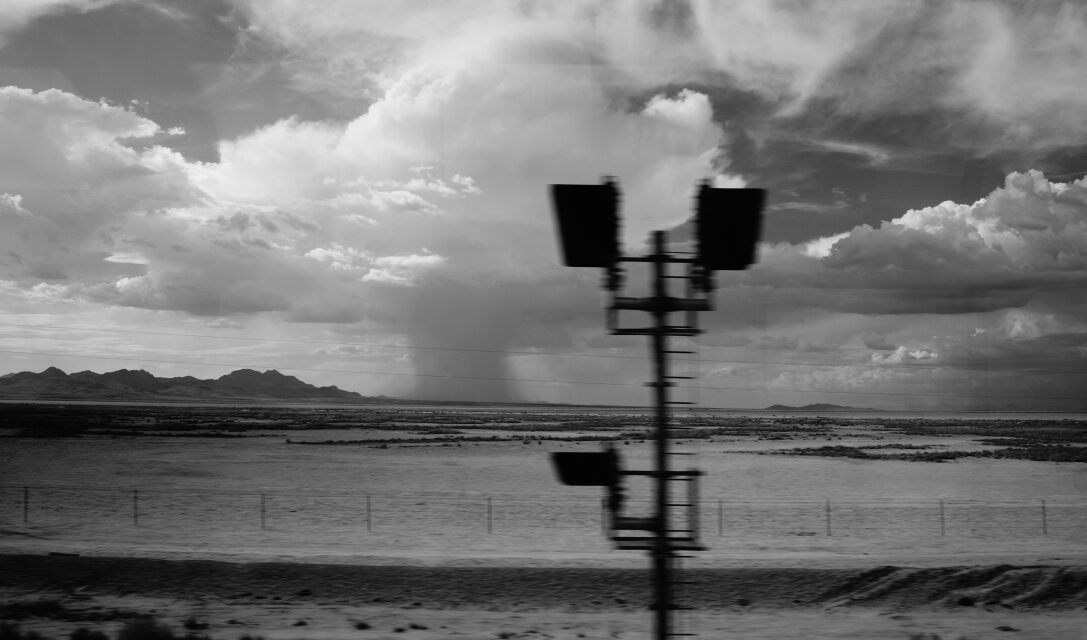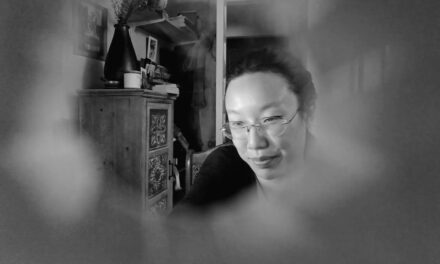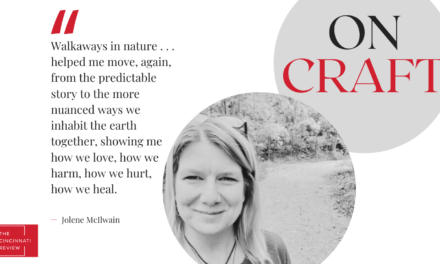When we mail out each issue to contributors, we encourage them to let us know if they’d like to expand the context for their work in our pages, via our blog. For Issue 17.1, we’ve heard from several contributors; the latest is Adam O. Davis, who’s interested in explaining the impetus behind his poem in our pages, “Weather Apothecary,” and sharing some illustrative photos. Here’s what he had to say:
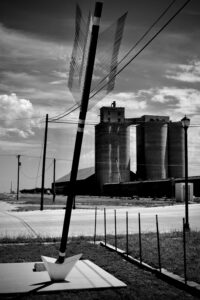
Adam O. Davis: It was a summer of signs. Hieroglyphic days. A growing sense of panic spelled out in the land of prosperity that I crossed in a rented Kia Forte with Maryland plates. I started in Pittsburgh and finished ten days later in San Diego, where I arrived dazed by the inertia of my travels, waiting for a taxi under mist-shrouded palms. I had, like a recreational Tom Joad, arrived at the Pacific after crossing the desert, the prairie, cutting through gas fields and cornfields and soybean fields, winding through limestone canyons and exhausted forests and passing under the webbed shadows of steel trestles in the pursuit of a taste of the truth of a transience that I thought had expired with the New Deal. But it hadn’t. In every ramshackle town I found the same deal: foreclosure, flight, fear. The foisting of dreams as if they were flags, their naked desperation flapping quietly over brick-paved streets and the roadside arrows that lined the Quanah Parker Trail.
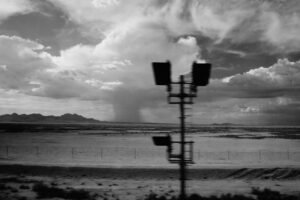
It was August 2015. I was researching a novel about the Great Depression, following defunct railroad lines copied from a 1927 map discovered in the cartography room of the New York Public Library. I had been worried that the trip might not reveal the past as it had been, but my fears were unwarranted—wherever the railroad faltered, so did America. Wherever a train no longer stopped was a town where people had once been. And in those abandoned towns I found abandoned buildings for sale, phone numbers written in soap on their plate-glass windows. In between towns, roadside ponds so bright with algae they looked filled with antifreeze. A grass plot planted with 502 tiny white crosses in remembrance of the 502 former inmates of the Lima State Hospital for the Criminally Insane. Grain silos. Fertilizer silos. Sonics staffed with teenagers in busted shoes. Signs warning against “cat dumping.” Signs proclaiming “Jesus saves” and “Christ died for our sins.” Signs handwritten on boxcars, coal hoppers, tank cars in places like Mattoon, Coffeyville, Newport. “Vodka is Russian for man.” “Strangest of the strange.” “Long days, fast years.” Everywhere there was the feeling of America pulling away from you, like a train leaving in the night. Everywhere there was the feeling that there was money to be made yet none to be found. Everywhere there was weather, boiled vegetables, the locustlike hum of the Republican primaries, cloud-sent shadows upon a land as suspicious as the hand of God.
I was anxious. My daughter was ten months old and I was driving to get back to her. How would she ever remember me if I needed to be remembered? The road was full of shrines. Shrines to car crash victims and war veterans, shrines to natural disasters and confederate soldiers, shrines to roadwork, to bank robbers, to buildings that had once been but no longer were. Shrines to shrines. Arriving in El Paso I saw “La Biblia es la verdad” written in bright white letters on the Cerro Bola Mountains. And then later, in the dark of night, the six million lights of Ciudad Juárez shivering like a sea of fire.
I listened to the car radio. AM. FM. Taylor Swift and car deals. Christian financial advice and Rush Limbaugh. Even as every other station was swallowed by static, Limbaugh’s voice found a number on the dial. Everything was outrageous. Everything worth being outraged over. Then, commercial breaks. Americans needed better insulin and better backs, better insurance and better home security systems. They needed to act fast, to call now, to do so for the sake of their families. Time was running out. Something had to be done.
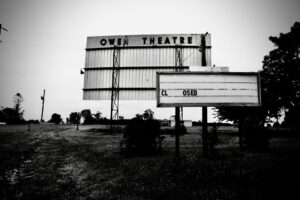
I followed signs to the LINCOLN BOYHOOD NATIONAL MUSEUM, to the CARRY NATION HOME & MUSEUM, to SHARON, KANSAS—THE HOME OF MARTINA MCBRIDE. I dropped wishes into a copper constellation of pennies at the bottom of the deepest hand-dug well in the world, in a town that had disappeared a decade before in a tornado. Later that night, after bad lasagna and a cold Coors in a former Harvey House, I slept in two different motels. In the first, my room swelled with roaches the second I killed the lights. In the second, my room’s door wouldn’t lock. Just outside it, a shirtless man surfed the web on an ancient PC, his wife smoking quietly with their diapered year-old son in her lap.
There were billboards for motels and hotels and car dealerships and online women’s prayer groups and Cracker Barrels and addiction hotlines and pest control companies and Boot Barns and “The Thing” whose mystery would only be revealed in a gift shop in the Bowlin Travel Center in New Mexico. And signs in every face I saw. The faces who told me I was of a different America. I began to understand what people meant when they said “California.” I was from California but I was no longer a person—I was a direction, a destination. I had become the idea of transience. I lived in a transient state. I was a sign who saw signs, and in every sign I saw, America spelled out its appetites without naming where such hungers came from or how it might sate them.
Adam O. Davis is the author of Index of Haunted Houses (Sarabande, 2020) and the recipient of the 2016 George Bogin Memorial Award from the Poetry Society of America. His work has recently appeared in or is forthcoming from The Believer, Boulevard, The Literary Review, New American Writing, and West Branch.
(To read more great poetry from Issue 17.1, you can buy copies of the issue in our online store, including the digital version, which is just $5.)

